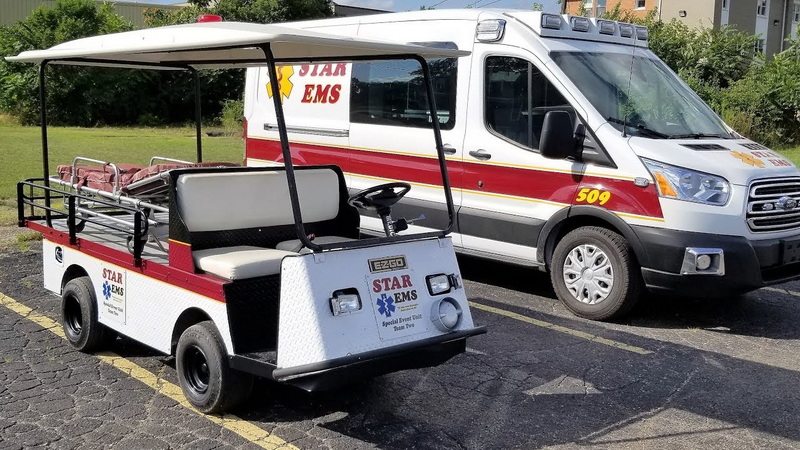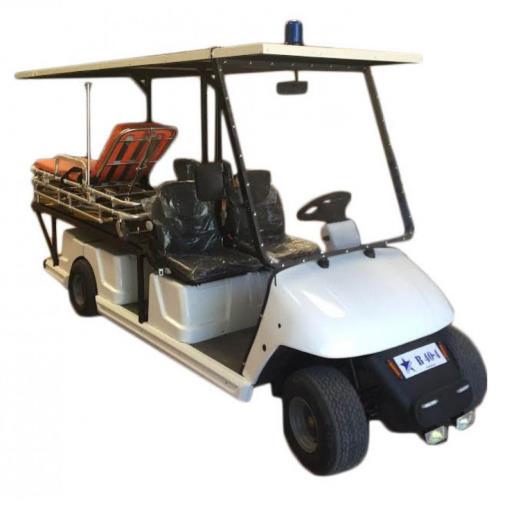Content Menu
● Introduction to Electric Ambulance Carts
>> Environmental Benefits
>> Operational Advantages
● Impact on Healthcare Sustainability
>> Case Studies
>> Challenges and Future Developments
● Integration with Smart Hospital Systems
● Expanding the Role of Electric Ambulance Carts
>> Technological Innovations
>> Public Perception and Acceptance
● Global Adoption and Future Prospects
>> Policy Support
>> Collaboration and Innovation
● Conclusion
● FAQs
>> 1. What are the primary environmental benefits of electric ambulance carts?
>> 2. How do electric ambulance carts contribute to cost savings in healthcare?
>> 3. What are some operational advantages of electric ambulance carts?
>> 4. How do electric ambulance carts enhance patient care?
>> 5. What challenges do electric ambulance carts face, and how are they being addressed?
Electric ambulance carts, often referred to as "golf cart" ambulances, are playing a significant role in reducing the carbon footprint of healthcare facilities. These vehicles are designed to transport patients within hospitals or small communities, providing a quiet, efficient, and environmentally friendly means of moving patients. In this article, we will explore the benefits of electric ambulance carts in reducing carbon emissions and their impact on healthcare sustainability.

Introduction to Electric Ambulance Carts
Electric ambulance carts are powered by rechargeable batteries and produce zero emissions, making them an attractive alternative to traditional fossil fuel-powered ambulances. They are particularly useful in urban areas where noise and air pollution are significant concerns. These carts are equipped with medical equipment and can be customized to meet specific healthcare needs.
Environmental Benefits
1. Zero Emissions: Electric ambulance carts produce no tailpipe emissions, which is crucial for reducing greenhouse gas emissions and improving local air quality. This is especially important in densely populated areas where air quality can significantly impact public health.
2. Reduced Noise Pollution: The quiet operation of electric carts reduces noise pollution, enhancing patient comfort and allowing paramedics to communicate more effectively during transport.
3. Lower Operational Costs: Despite higher upfront costs, electric ambulance carts save money on fuel and maintenance over their lifespan. They require less maintenance due to fewer moving parts and no oil changes, leading to significant long-term savings.
Operational Advantages
1. Faster Acceleration: Electric ambulance carts accelerate faster than traditional ambulances, which can be critical in emergency situations where rapid response times are essential.
2. Agility and Maneuverability: These carts are ideal for navigating narrow walkways and corridors, providing a smooth and efficient means of moving patients within hospitals.
3. Customization: Electric ambulance carts can be integrated with smart hospital systems, allowing for real-time tracking and efficient patient transport management. They can also be customized to carry specialized medical equipment.
Impact on Healthcare Sustainability
The adoption of electric ambulance carts aligns with healthcare organizations' sustainability goals. By reducing emissions and noise pollution, these vehicles contribute to cleaner, healthier environments for both patients and healthcare workers.
Case Studies
- Kenya's MTRH Hospital: The hospital procured an electric golf cart ambulance to transport critically ill patients within the hospital. This initiative has improved patient comfort and reduced the physical strain on nurses, while also aligning with Kenya's climate change action programs.
- London Ambulance Service: London has introduced electric ambulances that not only reduce emissions but also enhance patient care with advanced features like powered trolley bed systems.
Challenges and Future Developments
While electric ambulance carts offer numerous benefits, they also present challenges such as higher upfront costs and limited range. However, advancements in battery technology are continually improving these aspects. Fast charging infrastructure can mitigate lengthy charging times, making electric carts more viable for healthcare facilities.
Integration with Smart Hospital Systems
Electric ambulance carts can be integrated with smart hospital systems to optimize patient transport. This integration allows for real-time tracking, ensuring that carts are always available when needed and that patient transport is optimized. Such systems can also help in managing the charging schedules of these vehicles, ensuring they are ready for use at all times.

Expanding the Role of Electric Ambulance Carts
Beyond their current use, electric ambulance carts have the potential to play a broader role in healthcare. They can be used for non-emergency transport services, such as moving patients between facilities or to rehabilitation centers. This can help reduce the reliance on traditional ambulances for non-critical transport, further reducing emissions.
Technological Innovations
Advancements in technology are enhancing the capabilities of electric ambulance carts. For instance, some models now include advanced communication systems, allowing paramedics to transmit patient data in real-time to receiving hospitals. This can significantly improve patient outcomes by ensuring that medical teams are well-prepared for incoming patients.
Public Perception and Acceptance
Public perception of electric ambulance carts is generally positive, as they are seen as environmentally friendly and innovative. However, there may be concerns about their effectiveness in emergency situations. Education campaigns can help address these concerns by highlighting the benefits and capabilities of these vehicles.
Global Adoption and Future Prospects
As the world moves towards more sustainable practices, the adoption of electric ambulance carts is expected to increase globally. Countries with strong environmental policies are likely to lead in this adoption, driving innovation and reducing costs through economies of scale.
Policy Support
Government policies play a crucial role in promoting the use of electric ambulance carts. Incentives such as tax credits or grants for purchasing electric vehicles can encourage healthcare facilities to transition away from traditional ambulances. Additionally, investments in charging infrastructure are essential for widespread adoption.
Collaboration and Innovation
Collaboration between healthcare providers, technology companies, and policymakers is key to unlocking the full potential of electric ambulance carts. This collaboration can lead to further innovations, such as integrating renewable energy sources for charging and developing more efficient battery technologies.
Conclusion
Electric ambulance carts are revolutionizing the way healthcare facilities approach patient transport by offering a sustainable, efficient, and environmentally friendly solution. By reducing carbon emissions and operational costs, these vehicles are not only beneficial for the environment but also contribute to improved patient care and staff well-being.

FAQs
1. What are the primary environmental benefits of electric ambulance carts?
Electric ambulance carts produce zero emissions, reducing greenhouse gas emissions and improving air quality. They also operate quietly, reducing noise pollution in urban environments.
2. How do electric ambulance carts contribute to cost savings in healthcare?
Despite higher upfront costs, electric ambulance carts offer long-term savings through reduced fuel and maintenance costs. They require less maintenance due to fewer moving parts and no oil changes.
3. What are some operational advantages of electric ambulance carts?
Electric ambulance carts provide faster acceleration, quieter operation, and better maneuverability in tight spaces. They can also be customized with specialized medical equipment.
4. How do electric ambulance carts enhance patient care?
These carts provide a smooth, quiet ride, improving patient comfort during transport. They also reduce the physical strain on healthcare staff by automating patient transport.
5. What challenges do electric ambulance carts face, and how are they being addressed?
Electric ambulance carts face challenges like higher upfront costs and limited range. However, advancements in battery technology and fast charging infrastructure are addressing these issues, making them more viable for healthcare facilities.










































